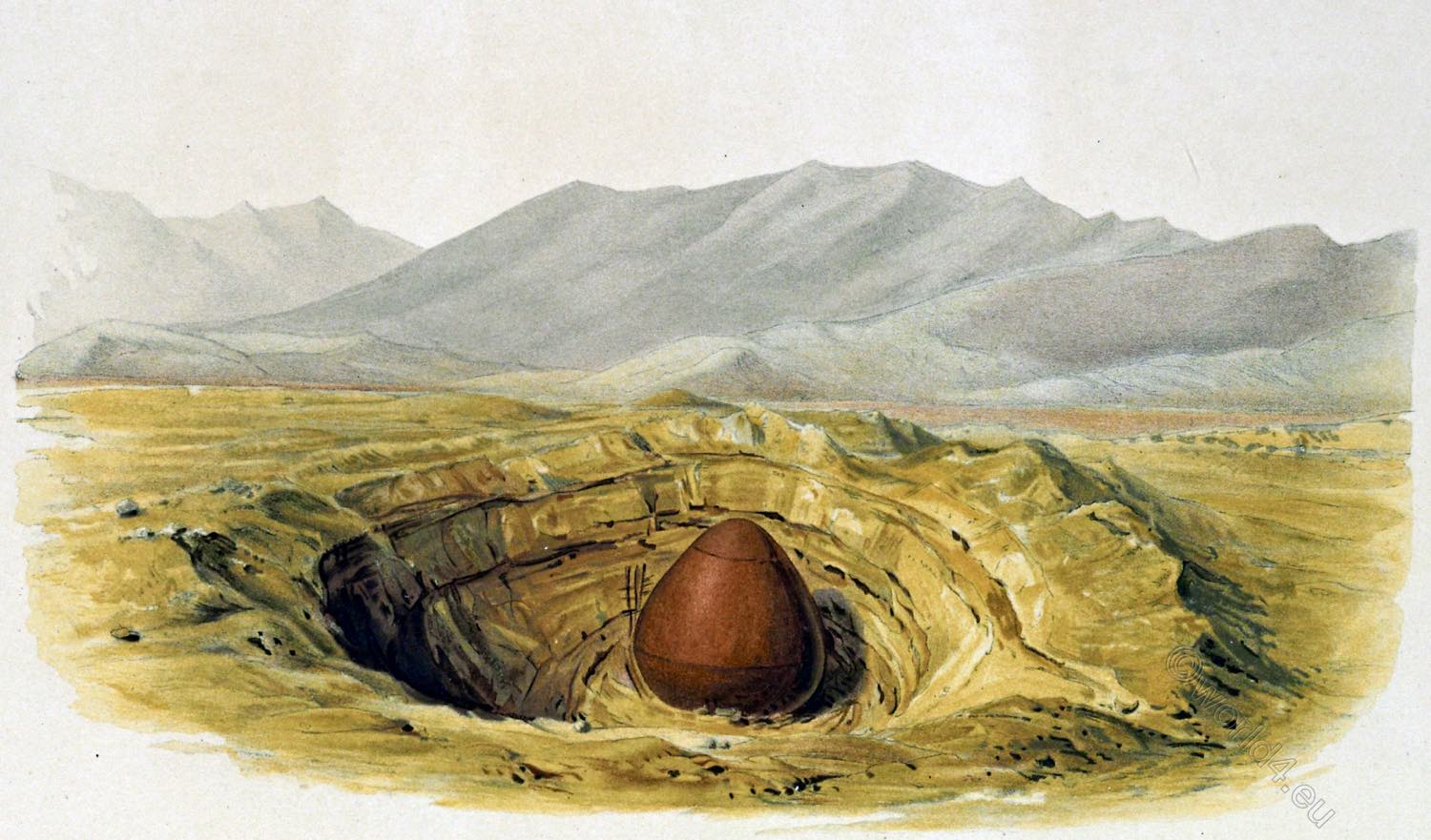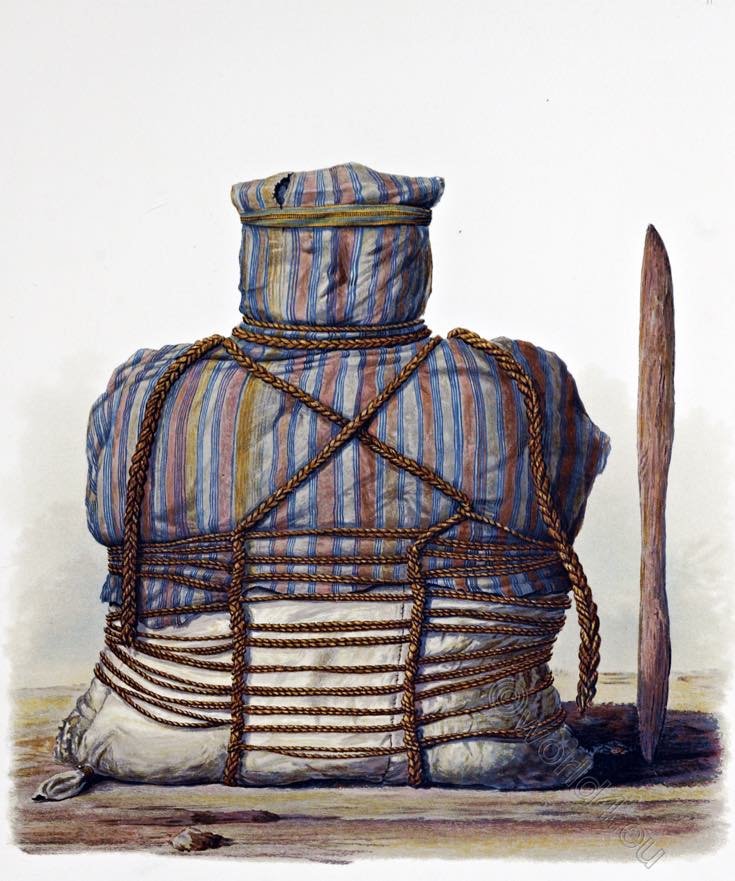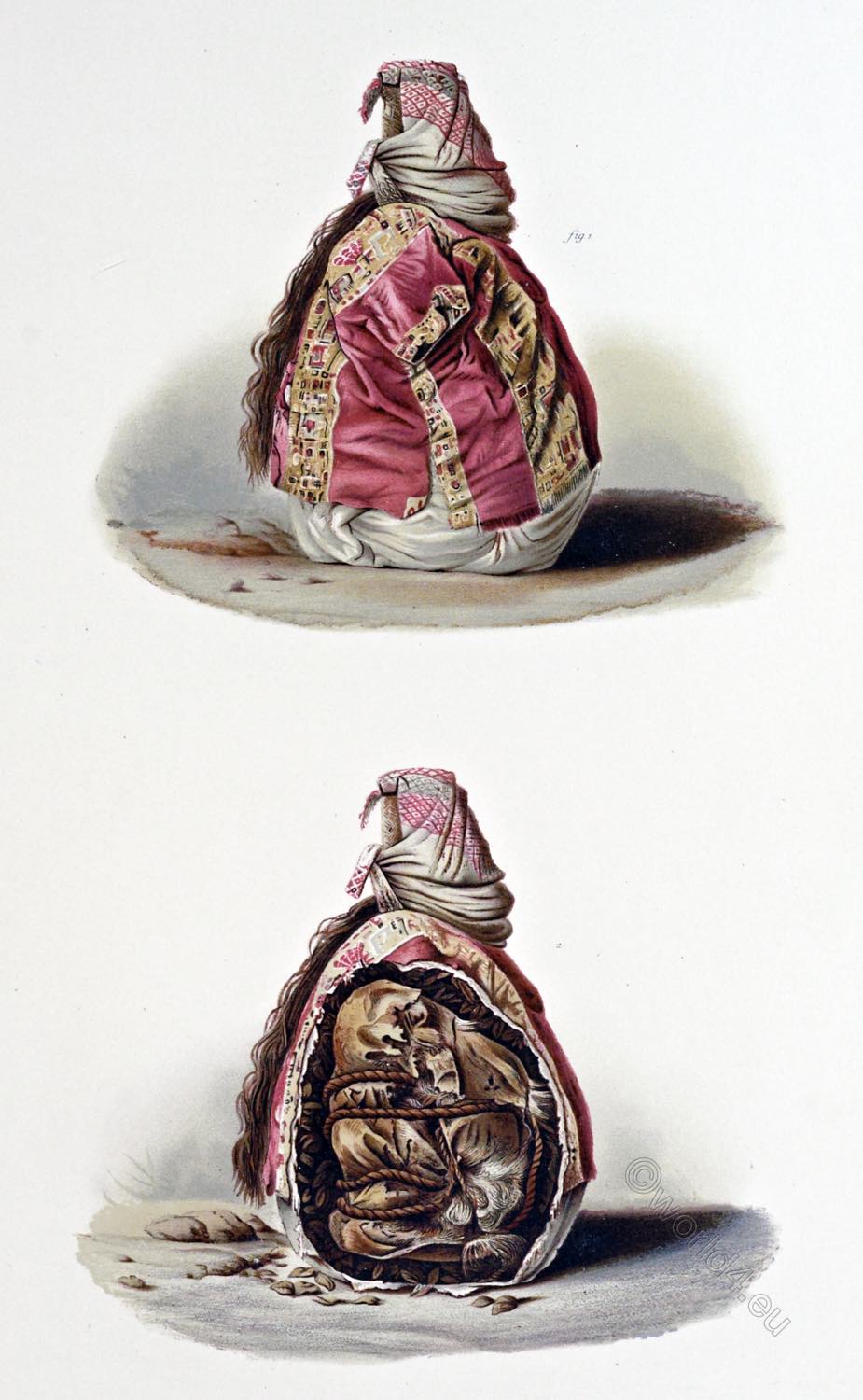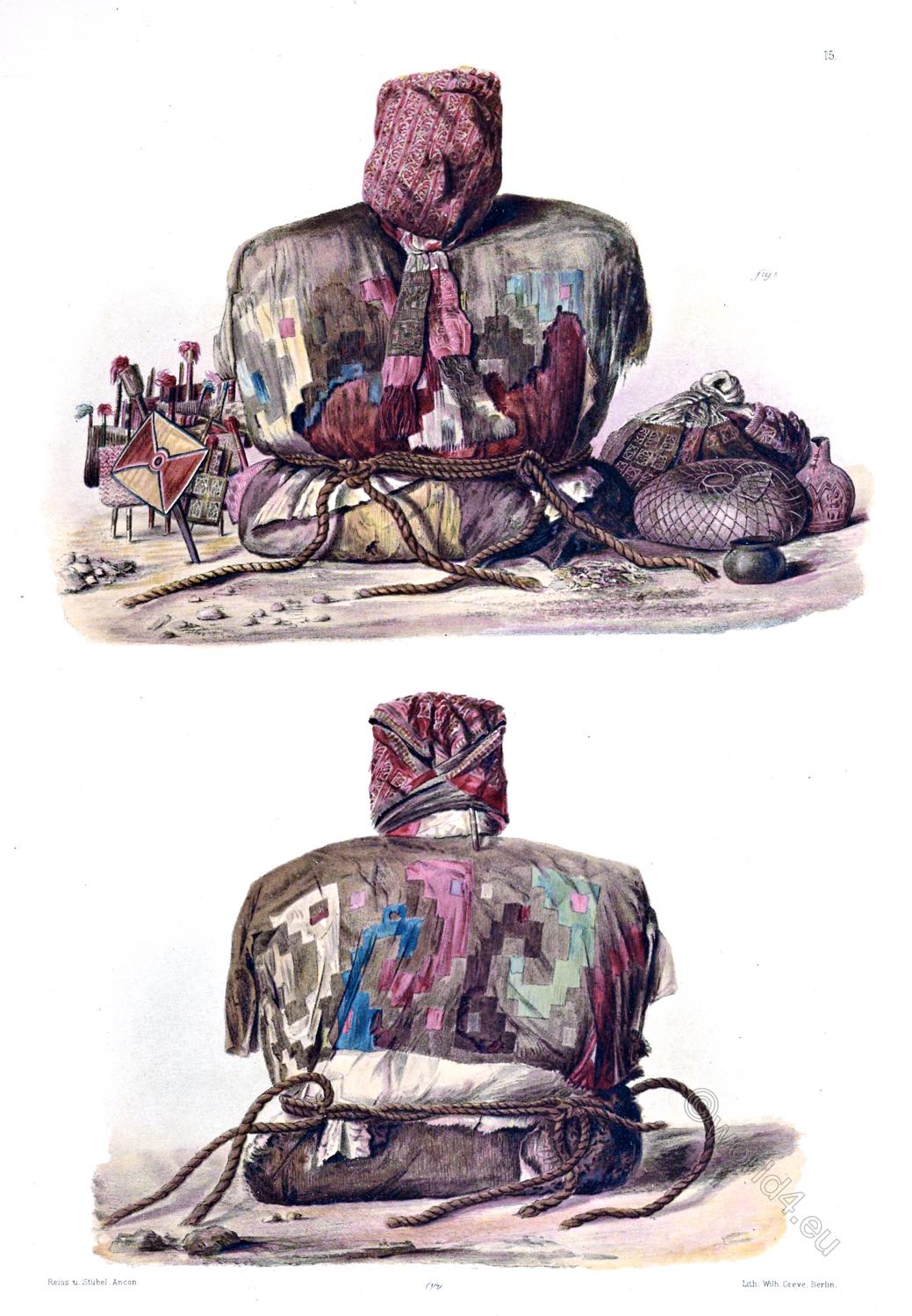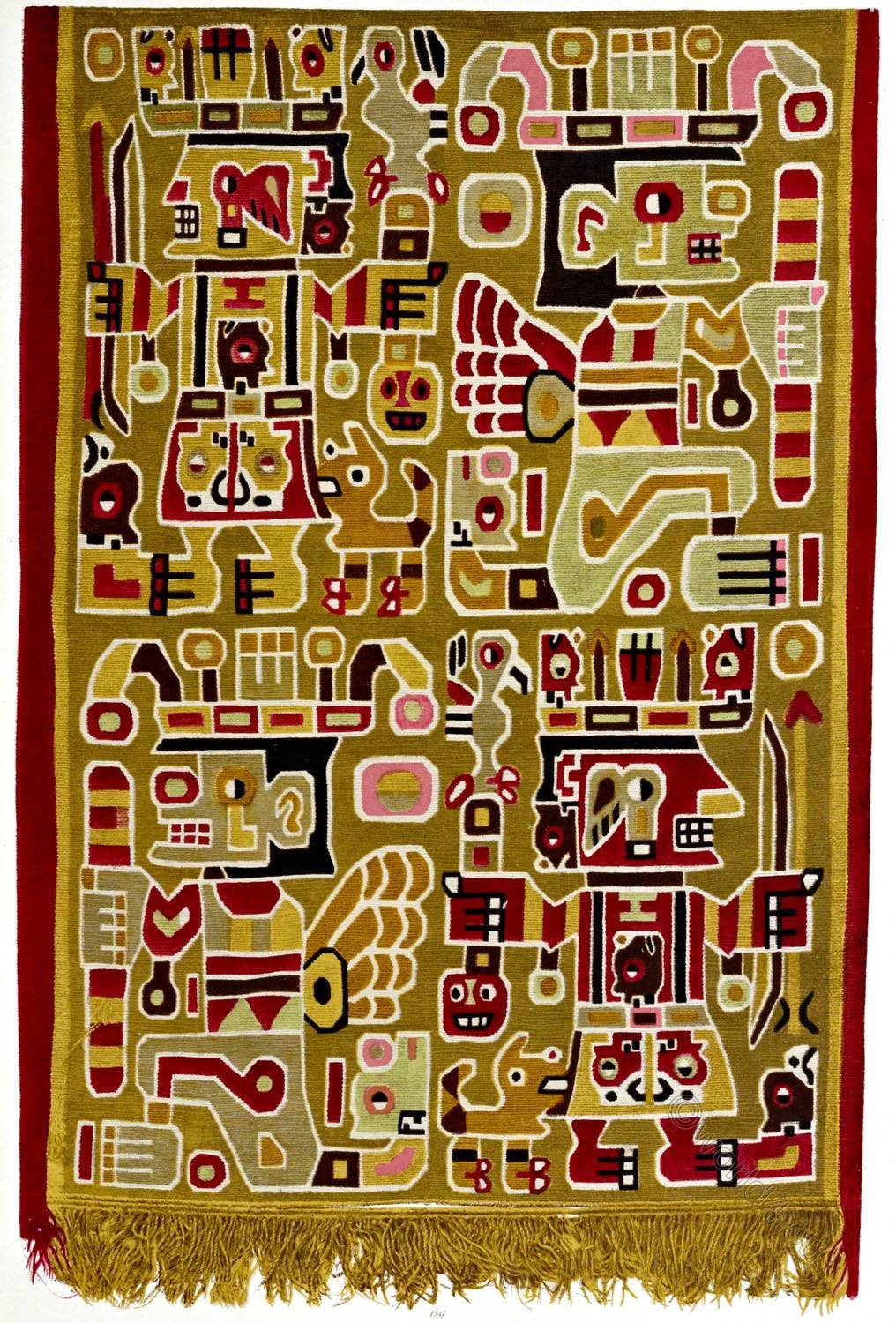
SUMPTUOUS GARMENT OF A MUMMY.
(Natural size.)
PLATE 49.
The broad yellow stripes of the line Gobelins robe belonging to the mummy figured on Plate 16 are ornamented in the richest manner. A first glance at the confusion of white lines and bright patches of colour will not reveal the pictorial representation designed by a wonderful fancy and woven by a practised hand.
The design of each stripe shows the sevenfold recurrence of two human figures, one seated, the other standing, but both conceived in the most original manner, and surrounded with diverse attributes and ornaments. Two pairs are here reproduced to illustrate the various dispositions both of the colours and attitudes.
The seated figures are drawn altogether in profile, but the standing ones in such a way that we get a front view of the bodies and a side view of the heads and legs. A comparison of both groups reveals a substantial difference in the treatment of the several members, apart altogether from the disposition of the colours.
The eyes, ears and nose are partly ornamented in a way difficult to describe; but the mouth is more natural. The black hair parted behind the ears falls with the sitting figures down to the shoulders, while with the others it reaches only to the lower part of the ear. In both the arms are bent in at the elbow, and embellished with pendant ornaments.
The hands of the standing figure are uniformly drawn with four fingers and the feet with three toes only, whereas with the others the hand has the full number of fingers, but the foot four toes only. The nails are in all cases clearly indicated. The leg of the sitting- figure is crossed by a stripe, as if to suggest the bone with its prominence at the hip-joint, while in the other figure the legs are covered by a tunic reaching nearly to the feet and fastened by a girdle.
Very different is the decoration of the bodies, the most noteworthy feature in which is obviously the butterfly wing attached to the back of the seated figures.
In the other adornments differences also occur, although the two sets of figures otherwise show great analogy. Different are the fantastic headdresses, the objects held in the hands and the surrounding ornaments. A peculiar type of decoration projecting from the lowest part of the seat is curved upwards behind the back, ending in a scarcely discernible conventional animals-head with up-turned snout.
A perfectly analogous ornament, but ending in a bird’s head, is attached to the toes of one of the standing figure’s feet, and in fact conventional animal heads of this type frequently recur both on the head-dress, the garments and the occiput of these figures.
The figure equipped with bow and arrow is followed by a dog on foot, undoubtedly the Canis ingae, here apparently for the first time occurring in a pictorial illustration. On the same side with the dog a bird is also introduced just above the upper end of the club in the archer’s right hand, which is embellished with a face.
The little rectangles thrown in between the limbs are apparently intended merely to fill in the spaces harmoniously. The whole is conceived and executed in a way to suggest the well known sculptures on the monolithic gate of Tiahnanaco.
Source: The necropolis of Ancon in Peru: a contribution to our knowledge of the culture and industries of the empire of the Incas being the results of excavations made on the spot by Wilhelm Reiss (1838-1908); Alphons Stübel (1835-1904), joint author; Wilhelm Greve, lithographer; Augustus Henry Keane (1833-1912), translator; Ludwig Wittmack (1839-1929); Rudolf Virchow (1821-1902); Alfred Nehring (1845-1904). Berlin: A. Asher & Co.; New York: Sole agent for America, Dodd, Mead & Company, 755 Broadway, 1880.
Discover more from World4 Costume Culture History
Subscribe to get the latest posts sent to your email.

